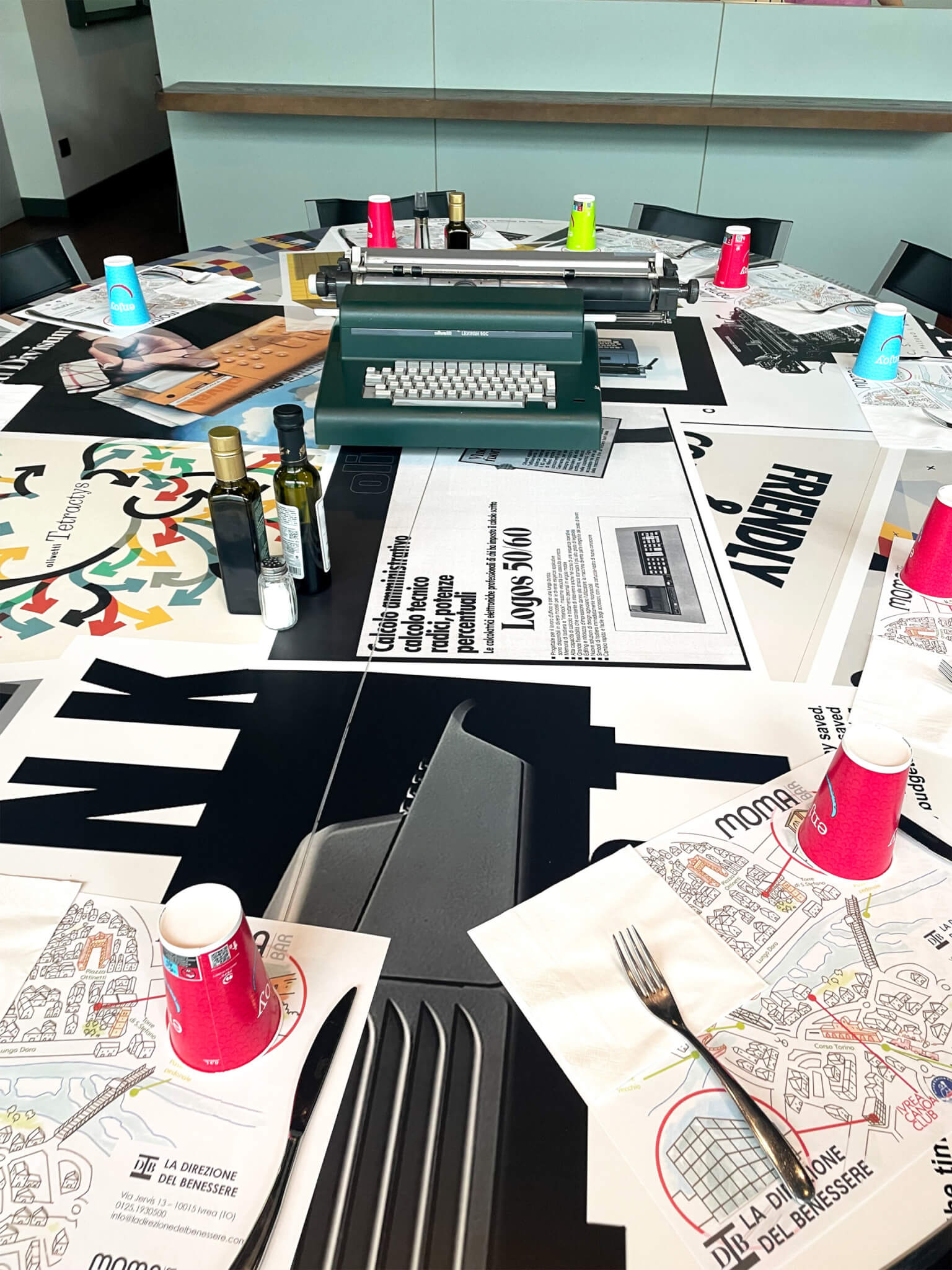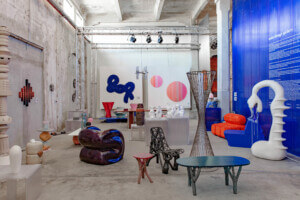After participating in Stratosferica’s Utopian Hours conference in Turin, Italy, last fall, where The Architect’s Newspaper was a media partner along with Monocle and Bloomberg, I had the chance to cross a site off my bucket list of architectural destinations. On an overcast Monday, I visited Ivrea, where the Olivetti campus is spread across the hills south of the town center. The company’s factory buildings and social programs are impressive but not widely known, though the complex did become a UNESCO World Heritage Site in 2018. The citation is clear about the rationale for recognition: “Ivrea expresses a modern vision of the relationship between industrial production and architecture.”
Olivetti, founded by Camillo Olivetti in 1908, got its start manufacturing typewriters. The company first worked from one brick factory but eventually commissioned a series of expansions by rationalist architects Luigi Figini and Gino Pollini, including a curtain- walled section that Le Corbusier envied. The Olivetti brand flourished under the leadership of Camillo’s son Adriano. Olivetti built architect-designed factories and showrooms around the world—from New York’s 5th Avenue store by Milanese architects BBPR, featuring a sculpture by Costantino Nivola, to the Venice showroom along St. Mark’s Square by Carlo Scarpa.
Olivetti was concerned with its employees’ well-being. In Ivrea, it built housing for workers, a school, and a canteen complete with a library. Factory employees weren’t fired, just reassigned. Adriano was a socialist and distanced himself from both the Fascist and Communist parties. As explored by Meryle Secrest in The Mysterious Affair at Olivetti, during World War II, Adriano was a CIA informant and plotted against Mussolini. After the war, he founded his own political party, Comunitá, but it quickly foundered.
Adriano was on a mission of expansion before he died suddenly on a train in 1960, followed by the death of Mario Tchou, the company’s leading computer engineer, in a car crash the next year. Some, including Secrest and members of the Olivetti family, suspect foul play in both cases. A deal to take over Underwood left Olivetti in financial crisis. Still, after a series of its own takeovers and partial sales, Olivetti pressed on: It wasn’t until 1968 when Ettore Sottsass’s Valentine typewriter became a hit. Still, it lost steam in the 1990s and ultimately was absorbed into an Italian telecommunications company.
Today, several businesses occupy the campus’s buildings, but some remain vacant. I visited the nursery—featured in MoMA’s 1952 exhibition Olivetti, Design in Industry—whose restoration was nearly complete. In another building, a cafe serves lunch next to a gym; old machines and archival material mingle with paper cups and placemats, as seen in the accompanying image, a still life that speaks to the promise of a bygone dream of cooperative existence.

In this issue, AN explores a similar spirit of collectivity, which is needed now more than ever. Our features take on recent housing projects from Nashville to London and organizational developments in both architectural practice and a long-running New York nonprofit. Our Focus section showcases four new dwellings—from a single-family home on a scenic site in Nova Scotia to an affordable housing complex in Los Angeles—in addition to an in-depth set of residential products. Up front, we visit ARO’s new studio and explore new projects in Bologna and Hangzhou. Finally, we offer a preview of this year’s exciting Facades+ events.
The back of the issue contains three pieces closer to home in New York: an essay describes new additions to Levittown and contemporary real estate pressures; a portfolio by photographer Zara Pfeifer, with an accompanying essay by AN’s associate editor, Dan Jonas Roche, celebrates Herman Jessor’s Co-op City at 50; and Roche interviews Daniel Libeskind about his upbringing and work on affordable housing. Studio Libeskind’s newest project, an affordable senior housing project in Brooklyn’s Bedford-Stuyvesant neighborhood, is due to open soon.
Our families shape us in deep ways. Last year, I spoke with architects and siblings Nina Cooke John and Sekou Cooke about their upbringing and work. We were fortunate to be joined by their parents, Leroy and Cynthia, who added their perspectives to the conversation. If any other architects are brave enough to be interviewed alongside their parents, my inbox is open.











